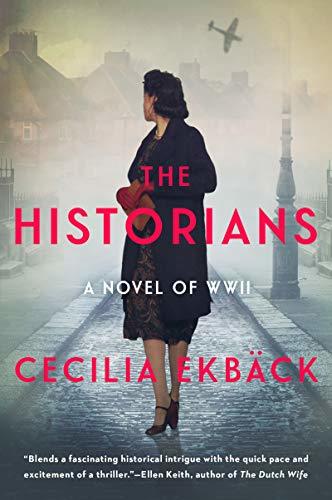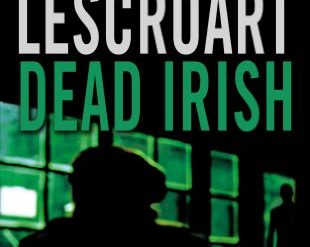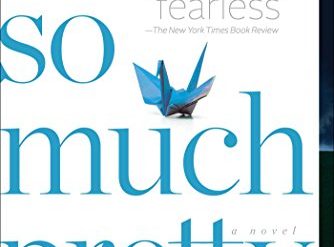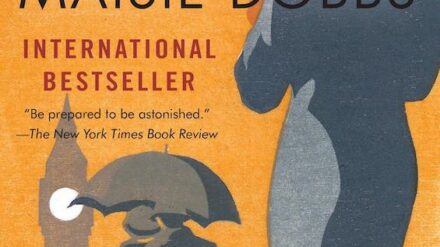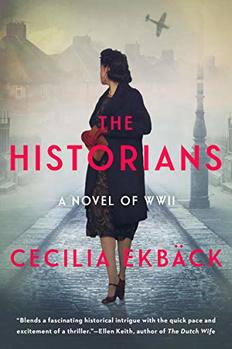
What most of us in the English-speaking world know about Scandinavia’s role in World War II is largely limited to tales of the Nazi invasions of Norway and Denmark. Less well remembered are the events that unfolded in neutral Sweden, the region’s most populous country. And award-winning Swedish author Cecilia Ekbäck uses those events and invents some of her own in a new WWII thriller, The Historians. The book is a complex and challenging tale that leaps from one surprise to the next. The result is spellbinding.
A complex WWII thriller that unfolds in three parallel directions
1943. Sweden. In a Sami village in the country’s far north, a region called Lappland, a thirteen-year-old girl goes missing while setting traps for rabbits near an iron mine. She is far from the first of her tribe to vanish on the mountain. Meanwhile, the daughter of the foreman at that mine, a university graduate student in history, is brutally tortured and murdered in the distant south. Her best friend, now employed in a trusted government post, sets out to learn who killed her. And the personal secretary to the Minister of Foreign Affairs uncovers evidence indicating that his boss is involved in secret discussions he is desperate to cover up. These are the three tracks along which this exceedingly clever and compelling WWII thriller winds its way to a conclusion.
The Historians by Cecilia Ekbäck (2020) 464 pages ★★★★★
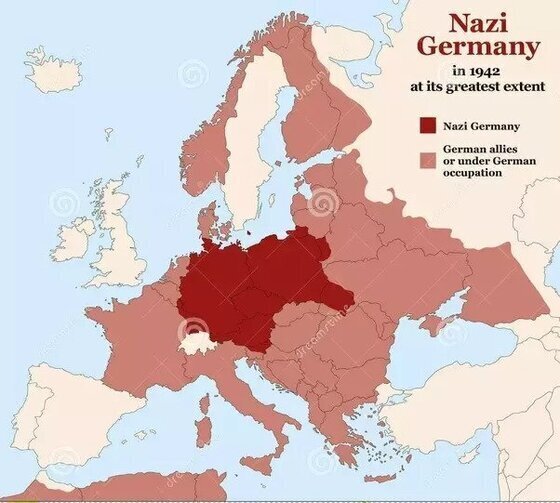
The “historians”
A large cast of characters figures in this tale, but the eponymous “historians” of the title are at the center of much of the action. They are five young people—two Swedes, a Norwegian, a Dane, and a Finn—who studied the subject at Uppsala University in the class of 1940. The five became close as a group when a revered professor invited them to join him periodically at nachspiele, light dinners held after the meetings of the Historical Society.
- Britta Hallberg is beautiful, vivacious, and disorganized—a “party girl” whose relationships outside the group of five rarely outlasted a single night. In 1943, as a history graduate student still at Uppsala, she is tortured and shot to death, execution-style. Britta’s murder sets off the action that involves all four of her former friends.
- Laura Dahlgren‘s father is the wealthy and powerful governor of the Bank of Sweden. She works closely with Jacob Wallenberg in the Swedish office negotiating a trade agreement with Nazi Germany (and secretly helping Jews escape the Nazis). Britta was Laura’s best friend, although they have seen very little of each other since Laura left Uppsala for Stockholm.
- Erik Anker, a Dane, always seemed to suffer from an unrequited love for Britta. After the German invasion of his country, he returned home to join the resistance.
- Karl-Henrik Rogstad, who is Norwegian, made his way back to Norway after his graduation to enlist in the resistance.
- Matti Karppinen works for the Finnish Ministry of Information and is deeply involved in his nation’s perilous balancing act between Nazi Germany and the Soviet Union, which has twice tried to seize control of the country.
How the plot unfolds
Laura Dahlgren is determined to find out who murdered her best friend, and what could possibly explain the ferocity of her killer. Jens Regnell wonders why his boss, the Minister of Foreign Affairs, refuses to acknowledge the telephone call he held with his counterparts in Denmark and Norway, and he won’t rest until he learns why. And at the iron mine far away in Lappland, the new director is angry that his superiors in Stockholm won’t allow him to investigate the reasons why a section of the mine is closed to him. Like Laura and Jens, Rolf Sandler is motivated to ask questions even after he’s been warned off.
All three will expose themselves to great danger as they pursue the truth along lines that eventually will merge. This is no conventional serial killer story. It’s a WWII thriller that draws on the history of the war and the sad reality in Sweden at a perilous time in its evolution as a modern nation.
Sweden’s precarious role in World War II
Not always a rich or stable nation
Today, Sweden’s ten million people enjoy one of the stablest and wealthiest economies on the planet. Yet a century ago, the country was among Europe’s poorest nations. (Just half a century earlier the country suffered through a devastating famine.) And the Swedish people were still decidedly poor in the wake of the Great Depression as World War II got underway. Then, as now, Sweden depended heavily on international trade, and its biggest trading partner outside Scandinavia was nearby Germany. The Swedes exchanged the rich iron ore they mined in abundance for German coal to heat their homes and fuel their factories. The plot in this WWII thriller revolves around that dependency.
A neutral country in name more than fact
Officially, Sweden was neutral in the war and managed to stay that way throughout. However, Adolf Hitler was widely admired. Large numbers of Swedes favored closer relations with Nazi Germany. And the American racial ideology that later came to be most closely associated with the Nazis and the Holocaust found a ready audience among the Swedish people.
Dreaming of a Scandinavian Reich
Many Swedes had long dreamed of their own united Scandinavian Reich under one strong leader. The upshot was that the Swedish government under the Social Democrats leaned toward the Nazis, allowing a total of two million German troops to transit through the land en route to occupied Norway during 1940-43. Pro-Nazi attitudes were especially strong in the military, the police, and the intelligence services. And rumors constantly swirled of conspiracies afoot to overthrow the government and enter the war in support of the Nazis.
The Sami people
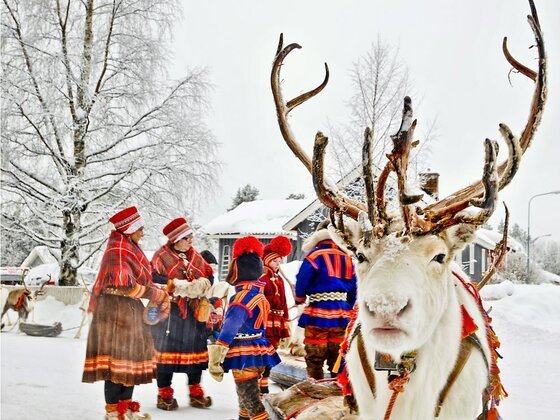
Today an estimated 80,000 Sami inhabit the vast territory of Lappland. It sprawls across the northernmost reaches of Norway, Sweden, Finland, and extreme northwest Russia and is nearly as large as the state of California. Some 50,000 Sami live in Norway, 20,000 in Sweden. They speak ten languages that are distantly related to Finnish and Hungarian. The Sami are usually identified as reindeer herders, their traditional occupation, but only some ten percent of Sami in Sweden remain as herders today.
How closely does the novel reflect the historical record?
Ekbäck has drawn three of the characters who play key roles in her story straight from the pages of history.
- Christian Günther (1886-66) served as Sweden’s Minister of Foreign Affairs throughout World War II. As the author reveals in her notes at the novel’s conclusion, Günther engineered the “Swedish-German rapprochement” in 1940-41 but, one year later, “offered Jews a refuge from the Holocaust.”
- Karl Schnurre (1898-1990) “was a Nazi diplomat central to Sweden’s relationship with Germany; he was sometimes described as ‘Hitler’s special representative.'”
- Jacob Wallenberg (1892-1980) managed trade negotiations with Germany, as the novel depicts. His better-known relative, Raoul Wallenberg (1912-47), doubtless a cousin, lost his life following the war in the Soviet Gulag after saving tens of thousands of Hungarian Jews from certain death in the Holocaust. The Wallenbergs were (and are) one of Sweden’s richest and most prominent families.

A fourth figure Ekbäck names Professor Lindahl, who is even more pivotal in the plot, somewhat resembles Uppsala University history professor Harald Hjärne. The university is, in fact, Scandinavia’s oldest—it was founded in 1477—and is often ranked among the world’s top 100 universities. It’s known for its emphasis on the sciences.
The fictional Blackåsen Mine, site of much of the action in the novel, represents the Kiruna Mine, about which Ekbäck wrote in two previous books. It’s the world’s largest iron mine and during World War II “the ore from Kiruna went largely to Germany.”
But Uppsala’s State Institute for Racial Biology, which is central to the story, did exist under that name, although its activities were very different from those depicted in Ekbäck’s imagination. Today, it is known as the State Institute for Human Genetics and is a department of Uppsala University.
About the author

Cecilia Eckbäck’s debut novel was Wolf Winter, which won the HWA Goldsboro Debut Crown and the High Plains Book Award. Her second novel, The Midnight Sun, was published to wide acclaim. Originally from a small town in Lappland in northern Sweden, Ekbäck now lives in Canmore, Alberta, Canada, with her husband and twin daughters. She was born in 1971.
For additional reading
If you hanker after Scandinavian thrillers, check out The best Nordic noir series from Sweden, Norway, Denmark, and Iceland. And if World War II rings your bell, be sure to read The 10 best novels about World War II (with 40 runners-up).
You might also enjoy my posts:
- Top 10 mystery and thriller series;
- 20 excellent standalone mysteries and thrillers;
- Top 10 historical mysteries and thrillers reviewed here (plus 100 others)
- Two dozen outstanding detective series from around the world.
And you can always find my most popular reviews, and the most recent ones, plus a guide to this whole site, on the Home Page.

